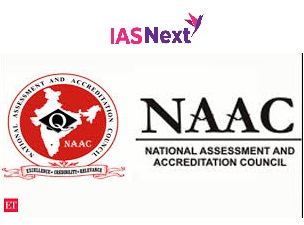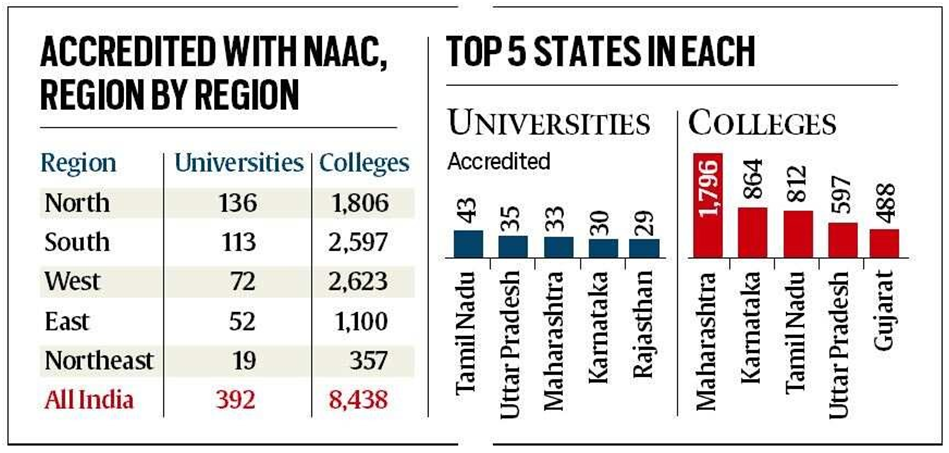CURRENT AFFAIRS
Get the most updated and recent current affair content on Padhaikaro.com
What is accreditation, and how does it help an educational institution?
- IAS NEXT, Lucknow
- 19, Feb 2022

Reference News:-
The National Assessment and Accreditation Council (NAAC) has relaxed the eligibility criteria for accreditation of higher educational institutions.
Need for:
The purpose of the change, according to the guidelines, is to “widen the horizon of accreditation”.
What are the current rules for accreditation?
- Under the rules before the new guidelines were issued, only higher education institutions that are at least six years old, or from where at least two batches of students have graduated, could apply for accreditation with NAAC.
- The accreditation is valid for five years. Aspiring institutes need to be recognised by the UGC and have regular students enrolled into their full-time teaching and research programmes.
- Distance education units and offshore campuses are not covered under the accreditation process.
What is accreditation?
Accreditation is a quality check exercise.
- It checks whether an institution meets certain standards of quality set by the evaluator in terms of curriculum, faculty, infrastructure, research and financial well-being among others.
- Based on these parameters, the NAAC gives institutions grades ranging from A++ to C. If an institution is graded D, it means it is not accredited.
Benefits of accreditation:
- Apart from recognition, being accredited also helps institutions attract capital as funding agencies look for objective data for performance funding.
- It helps an institution know its strengths, weaknesses, and opportunities through an informed review process.
- Accreditation helps students going for higher education abroad as many global higher education authorities insist on recognition and accreditation of the institution where the student has studied.

